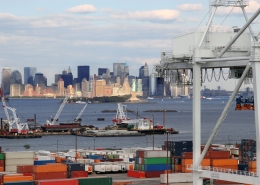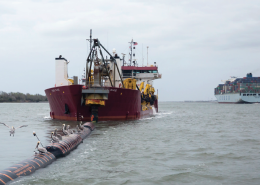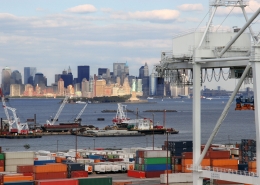The first time I heard Federal Highway Administrator Shailen Bhatt say, “Let’s err on the side of safety,” it was an aha moment for me! Safety is our number one priority, but until our most recent spike in fatalities across the country, many of us were taking a cautious approach to safety. We were often doing what we had always done and expecting different results.
Enter the Safe System Approach. When it was first introduced many of us said, “We’ve been doing many, most, or all those safety countermeasures. How is this a new or different approach?” After learning more about it I found that it certainly is a different approach. The main tenets are so important that anytime I’m talking about safety, I have everyone in the room repeat them, “Death and serious injuries are unacceptable. Humans make mistakes. Humans are vulnerable. Redundancy is crucial. Responsibility is shared. Safety is proactive.” These statements set a different tone and expectation for all of us.
While we had been implementing safety improvements across the country, we were still planning, designing, and constructing a system that could be unforgiving of human mistakes and their vulnerable bodies. Our system wasn’t redundant enough to counteract multiple mistakes. We put all the responsibility on the user – they didn’t have a seat belt on, they weren’t crossing at a crosswalk and were wearing dark clothes, they were speeding, they were impaired. And our process was often reactive – crashes happened, we analyzed crash data across our system, identified locations needing improvement and designed and constructed those improvements. Don’t get me wrong, we definitely had a positive impact on safety, but we weren’t moving the needle enough to address the nearly 20% increase in fatalities we were seeing year over year.
Under DOT Secretary Nicole Majeski’s leadership, we’ve been taking a multi-faceted approach to address the safety crisis we’ve been facing in Delaware by pursuing a safety package of legislation (https://governor.delaware.gov/trafficsafety/), making improvements that address human mistakes/vulnerability and improve redundancy, and initiating a new safety campaign to educate all transportation users (https://bedelAWARE.deldot.gov). We are laser focused on saving as many lives as we can and taking bolder steps to get to zero deaths.
For example, to combat median crossover crashes on our freeways and principal arterials, we’ve been installing cable median barrier and guardrail. They are not required based on the median widths and design speeds, but every time we see our crews out repairing them after a crash, we know we’ve saved lives. We’ve converted dozens of low-volume intersections to all-way stops, reducing fatal and serious injury crashes between 75% and 90%. These conversions aren’t always popular with drivers, but the data shows that they’re effective. We’ve also been constructing decorative median fencing along arterials to prevent mid-block pedestrian crossings.
These are just a few examples of how we’re taking a different approach to safety in Delaware. Our fatalities reduced by 16% in 2023 and we’ve seen a 28% reduction in fatalities so far in 2024. I know that we still have more work to do until we get to zero deaths, but we will continue to err on the side of safety until we get there.













